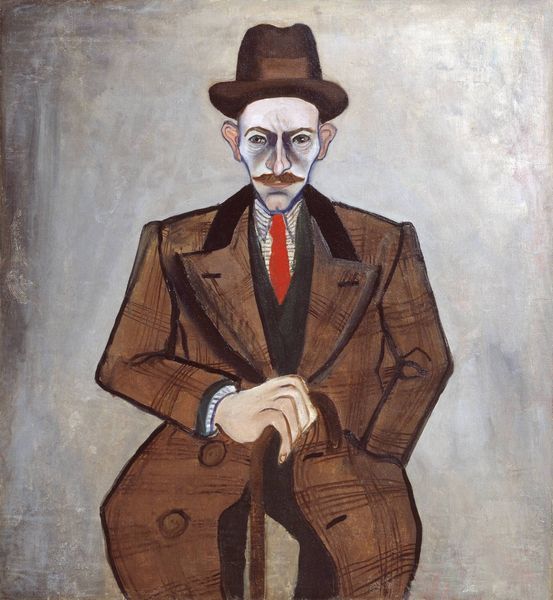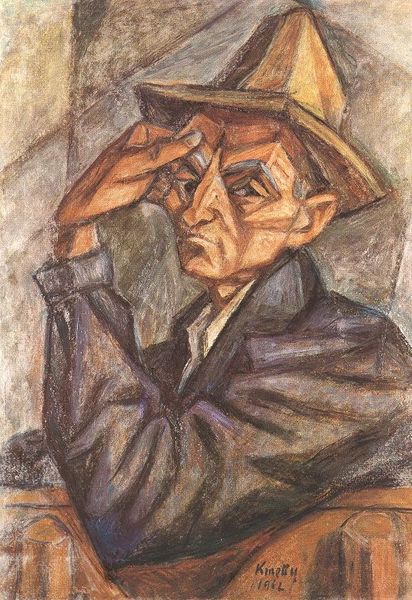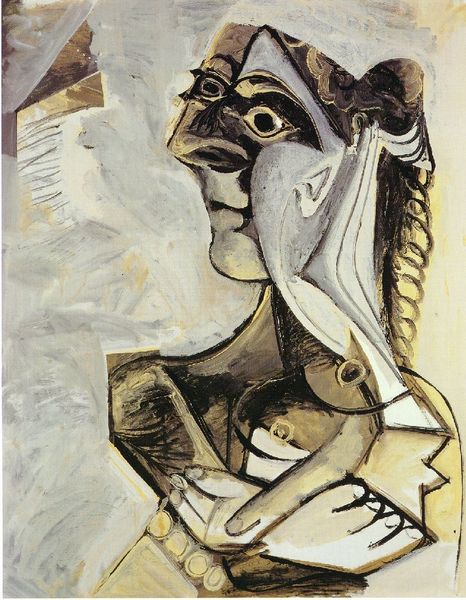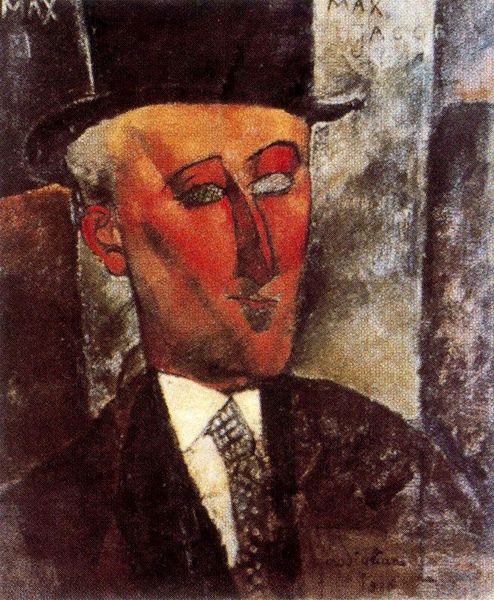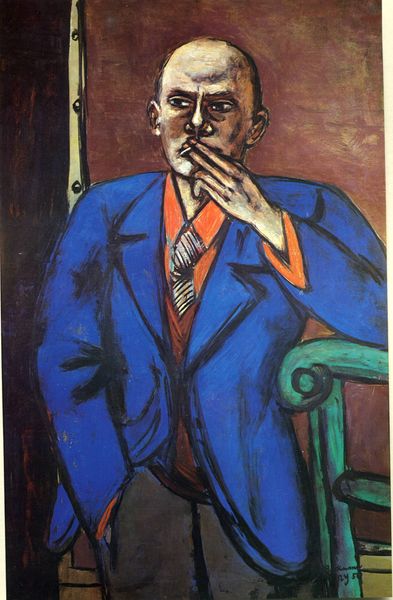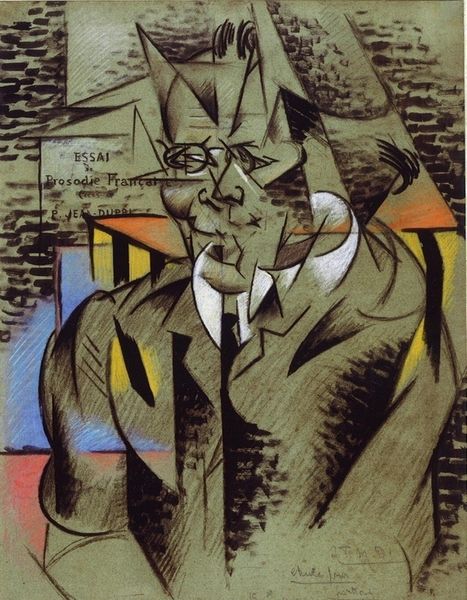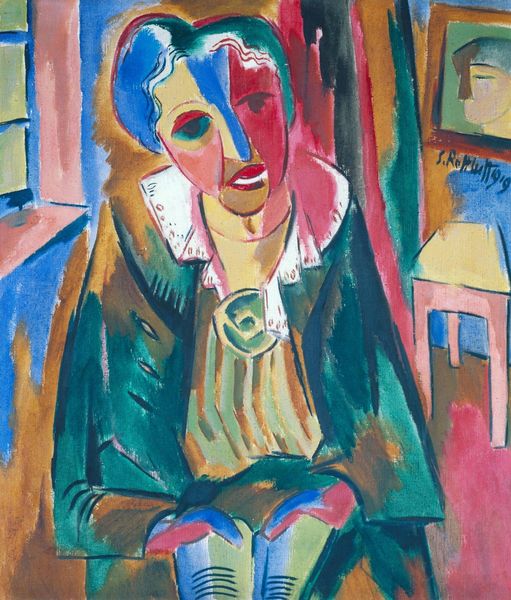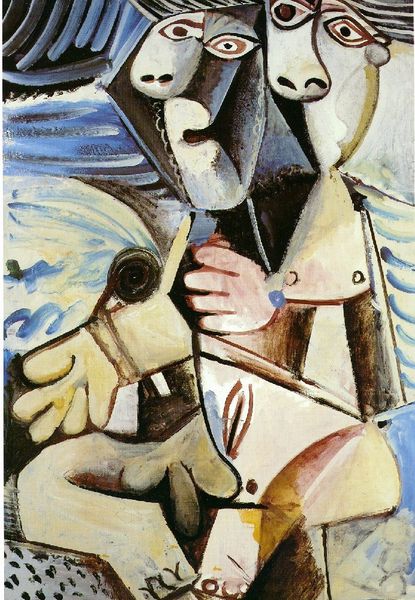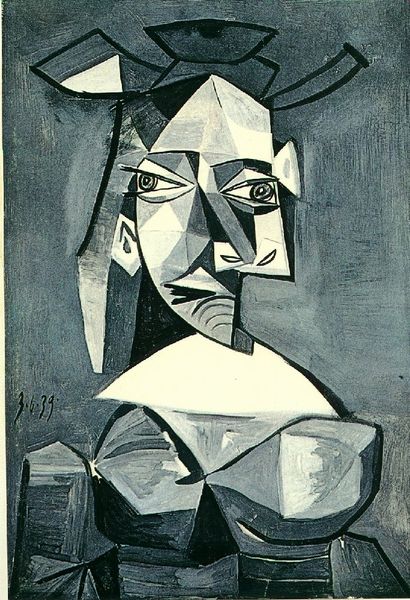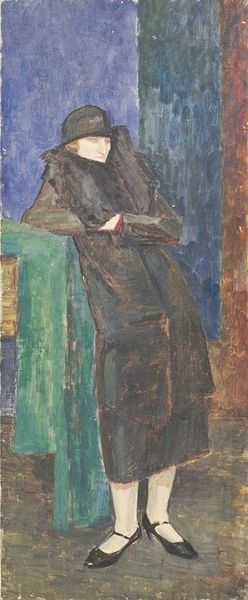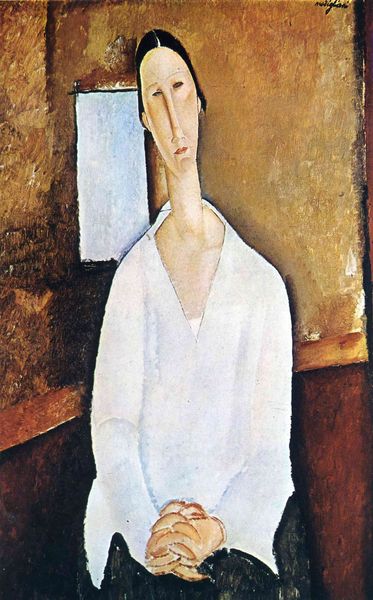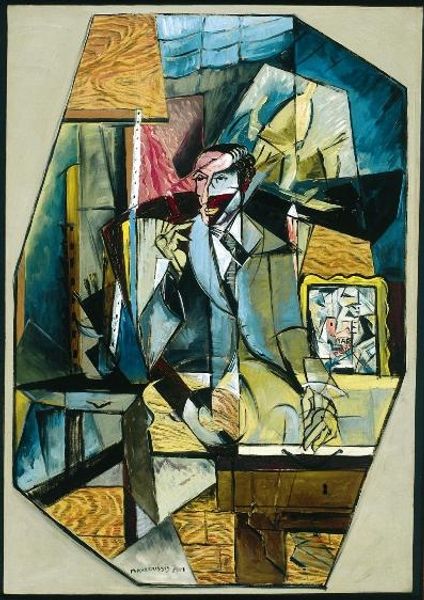
painting, oil-paint
#
portrait
#
painting
#
oil-paint
#
figuration
#
expressionism
#
portrait art
#
modernism
Copyright: Bertalan Por,Fair Use
Editor: This is Bertalan Pór’s oil painting "Mihály Károlyi" from 1930. It's... striking. There's something almost unsettling about the figure's gaze and distorted features. What kind of symbolism can you unpack in this work? Curator: The monocle, for instance. It's not merely an accessory; it signifies vision, not just in the literal sense, but intellectual and social perspective. The choice to depict Károlyi, a significant political figure, with this exaggerated lens hints at a critical, perhaps cynical view of leadership and societal vision. Does it feel like a magnifying glass focusing on flaws? Editor: Yes, especially given the already heightened expressiveness of his other features—the color of his skin, even the way he's leaning on the surface next to him. The whole thing has an anxious energy. Curator: The expressionistic style serves to amplify the emotional weight. Pór isn't just painting a portrait; he's capturing the inner turmoil, or perhaps projecting a societal anxiety onto Károlyi. Notice the stark contrast between light and shadow—aren't they emphasizing this internal conflict? Editor: Absolutely. I didn't initially consider the light. But, looking again, it seems to sculpt a feeling of isolation, doesn't it? Curator: Precisely. The cultural memory embedded here speaks of a period of political upheaval and uncertainty. Consider the historical context—the interwar period—a time ripe with disillusionment. Pór is using Károlyi as a vessel to communicate broader anxieties about power, perception, and the future. What would you say is the emotional residue after considering this piece? Editor: A deep sense of unease, but also a compelling invitation to look beyond surface appearances and question established narratives. Thank you! Curator: A potent piece of cultural commentary indeed! It's been illuminating to delve into its layers with you.
Comments
No comments
Be the first to comment and join the conversation on the ultimate creative platform.
